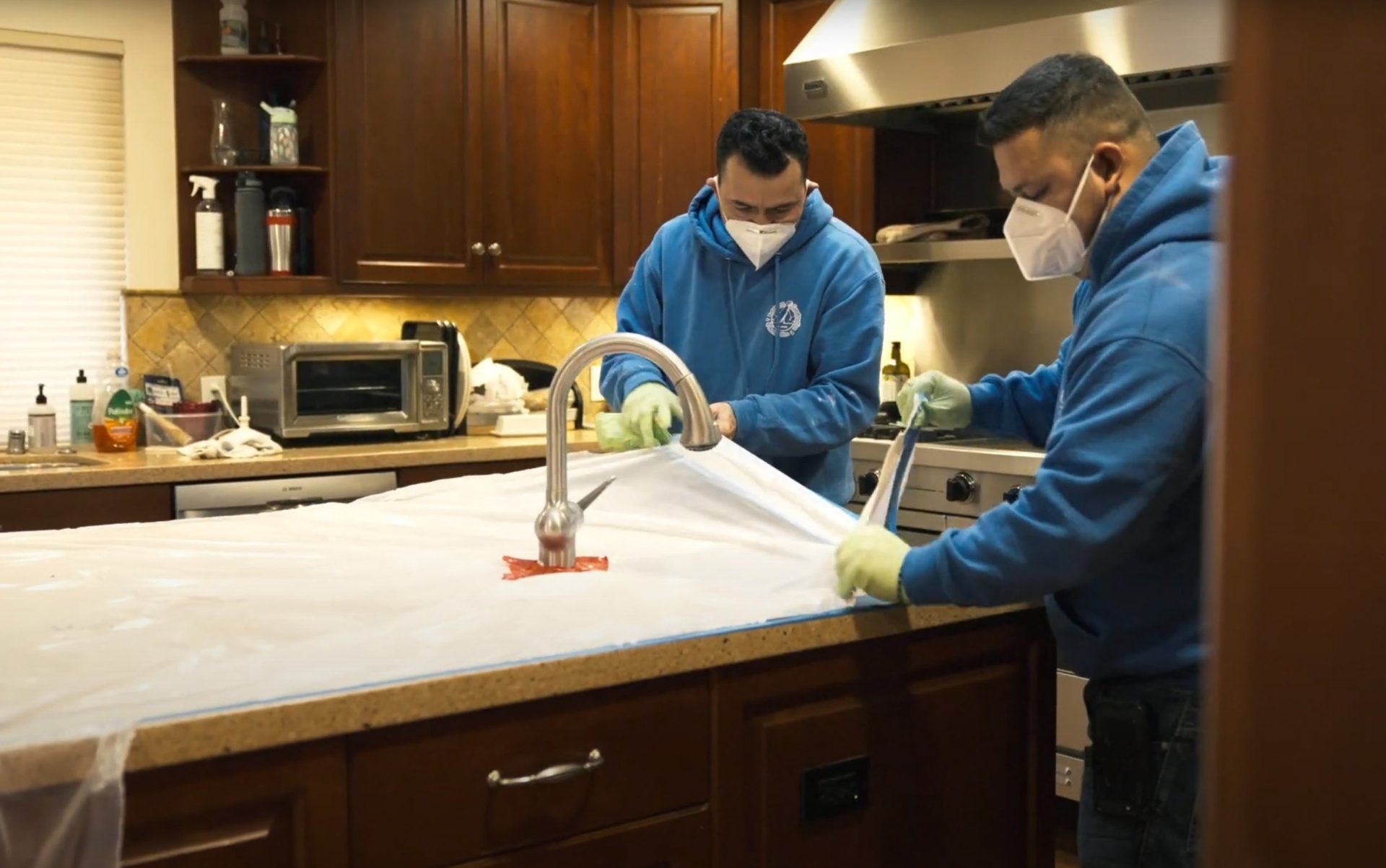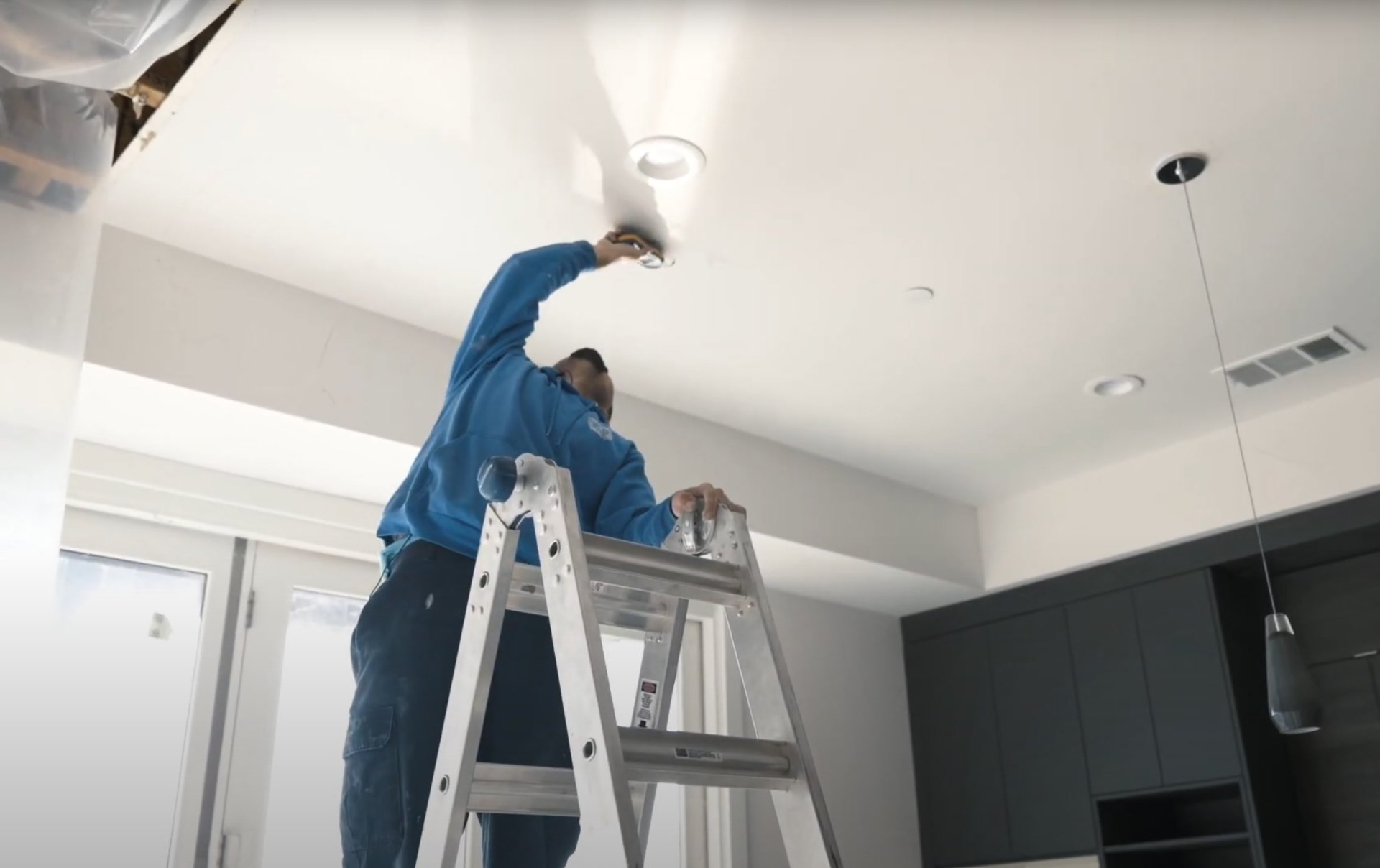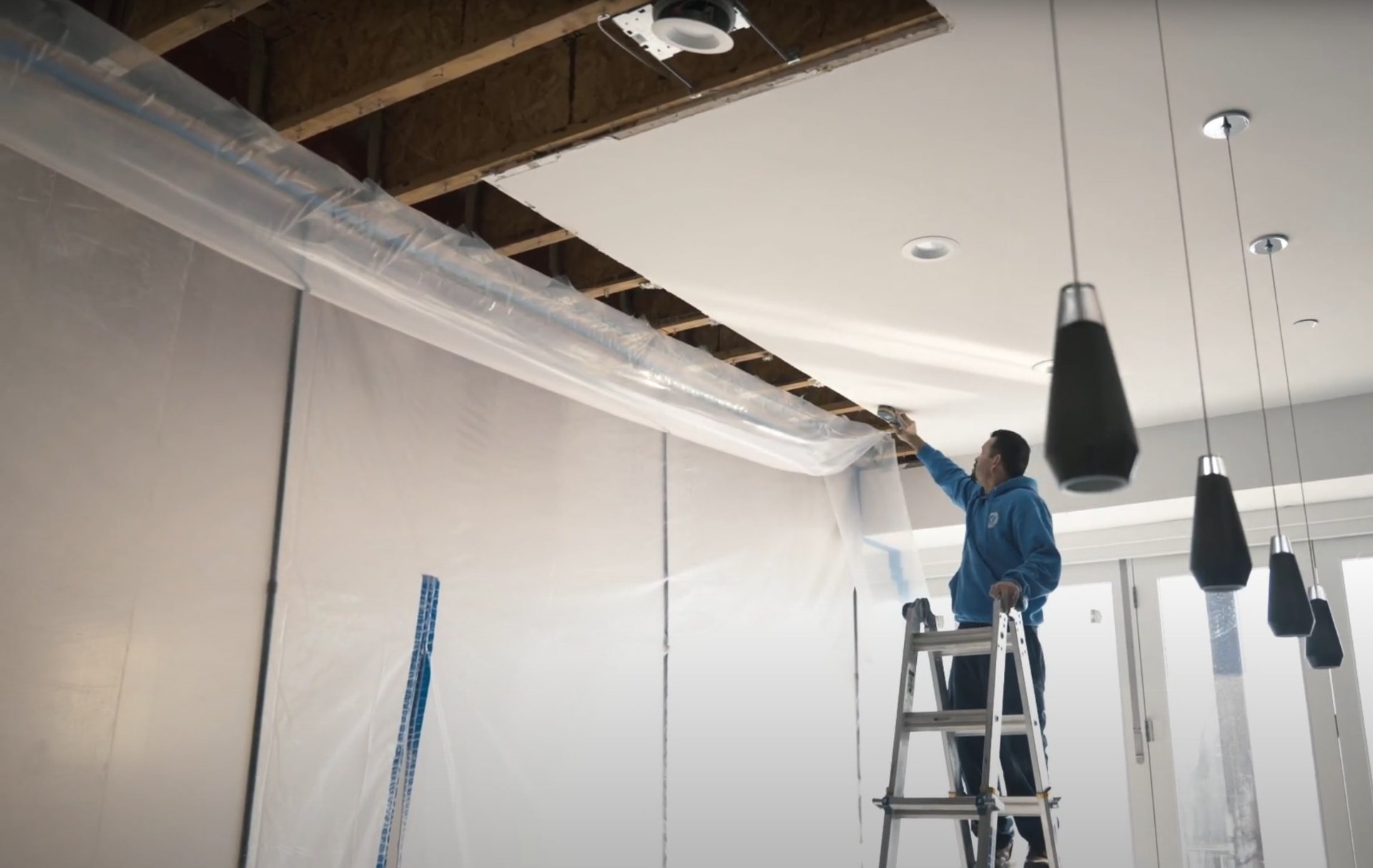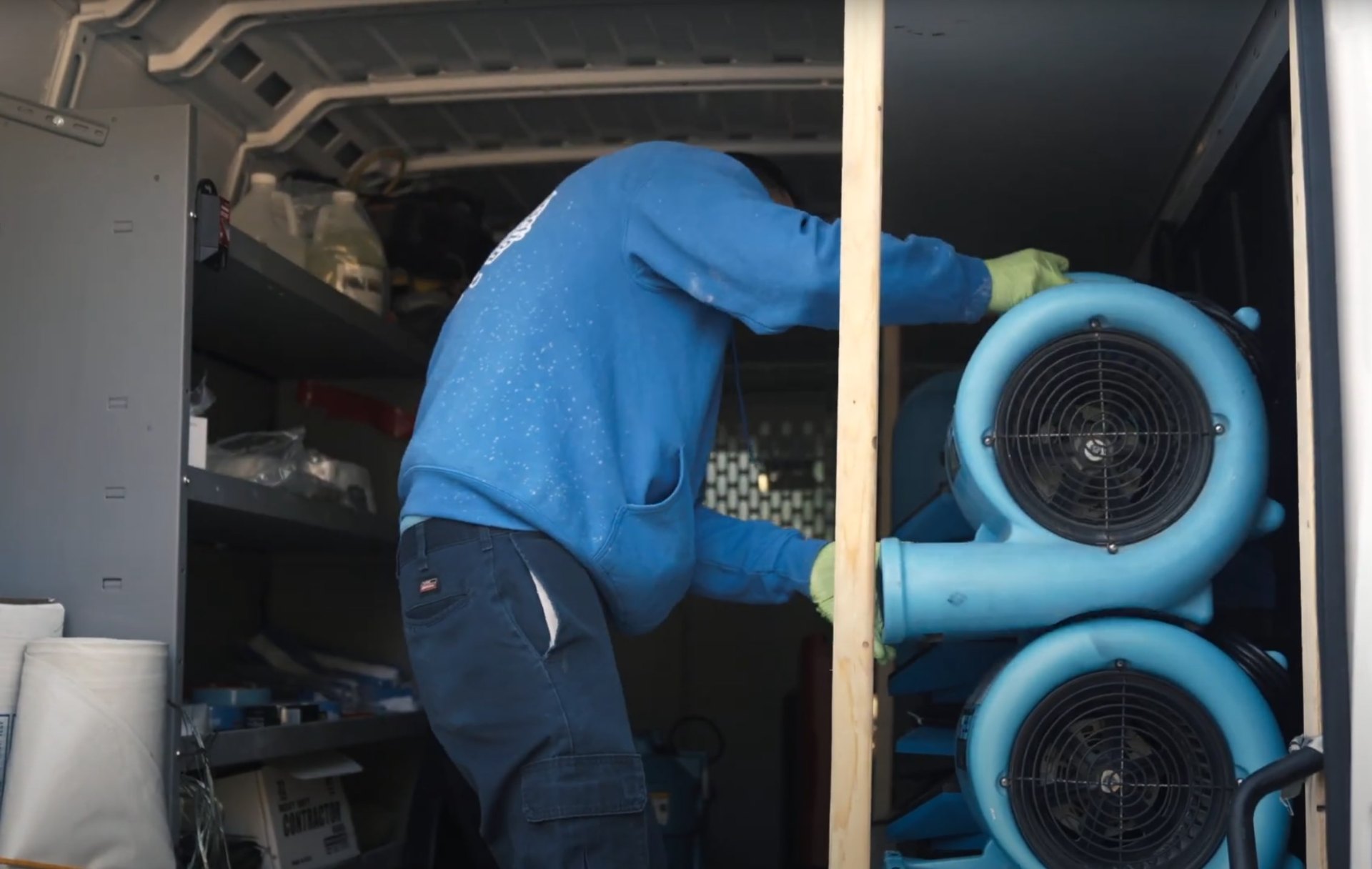Why Water Damage Can Hurt Your Home's Value
Have you ever wondered how much value your home could lose from just one water damage incident? The answer might shock you. According to the National Association of Realtors, untreated water damage can reduce a home's value by up to 15% or more, depending on the severity and duration of the damage.
Water damage restoration isn't just about cleaning up visible water – it's about protecting your most valuable investment. When water infiltrates your home's structure, it doesn't just stay on the surface. It seeps into walls, flooring, insulation, and even the foundation, creating a cascade of problems that compound over time.
The hidden dangers are often worse than what you can see. Moisture trapped in walls leads to mold growth within 24-48 hours. Wood framing begins to warp and rot. Electrical systems become hazardous. What starts as a "minor" leak can transform into a major structural issue that costs tens of thousands to repair.
Smart homeowners in Friendswood know that immediate professional water damage restoration is the key to preserving their property value. Every hour you wait allows water to penetrate deeper, making restoration more complex and expensive. Professional restoration teams use industrial-grade equipment to extract water, dehumidify affected areas, and prevent secondary damage that could devastate your home's worth. Our comprehensive emergency water extraction services respond 24/7 to minimize damage when disaster strikes.
Don't let water damage become a financial nightmare. Protect your investment with prompt, professional restoration services that address both visible and hidden damage before it's too late.


Our Services
At Friendswood Water Damage Restoration, we provide comprehensive water damage restoration services designed to get your property back to its pre-damage condition quickly and efficiently. Our certified technicians use state-of-the-art equipment and proven techniques to handle every aspect of water damage recovery.
Our emergency water extraction service operates 24/7 because we know that water damage doesn't wait for convenient times. We respond immediately to your call, arriving with powerful truck-mounted extraction units that can remove thousands of gallons of standing water in minutes, not hours.
Beyond extraction, we specialize in structural drying and dehumidification using industrial-grade air movers and dehumidifiers. Our structural drying and dehumidification process ensures complete moisture removal that prevents mold growth and structural damage. Our technicians monitor moisture levels throughout your property, ensuring complete drying that prevents mold growth and structural damage. We also provide thorough cleaning and sanitization services to eliminate bacteria and contaminants that water often brings.
Mold remediation is another critical service we offer. When water damage isn't addressed immediately, mold can begin growing within 24-48 hours. Our professional mold remediation specialists use advanced containment and removal techniques to eliminate existing mold and prevent future growth, protecting your family's health and your property's integrity.
We also handle insurance claims assistance, working directly with your insurance company to document damage, provide detailed estimates, and ensure you receive fair compensation for your claim. Our goal is to make the restoration process as stress-free as possible for you.
Flooded Basement? Here's What to Do Before Calling Us
Discovering a flooded basement can be overwhelming, but taking the right immediate steps can minimize damage and keep you safe while you wait for professional help. Your safety is the top priority, so never enter a flooded basement if the water level is above electrical outlets or if you suspect electrical hazards.
First, shut off electricity to the affected area at your main electrical panel if you can do so safely. Water and electricity create deadly combinations, so if you have any doubt about electrical safety, stay out and wait for professionals. Next, if possible, locate and stop the source of water entry – whether it's a burst pipe, sewer backup, or external flooding.
Document everything with photos and videos for insurance purposes, but only if you can do so safely from dry areas. Take pictures of water levels, damaged items, and the overall scene. This documentation will be crucial for your insurance claim and helps restoration professionals assess the situation before arrival.
Remove valuable items from the water if you can reach them safely, but don't risk your safety for possessions. Focus on important documents, electronics, and sentimental items that are easily accessible. Avoid walking through contaminated floodwater, as it may contain sewage, chemicals, or debris that can cause serious health problems. If your vehicle is flooded or blocking access to your property, you may need to contact a professional towing company to safely remove it from the affected area.
If you have experience in water damage restoration, you might be tempted to start cleanup yourself, but basement flooding often involves contaminated water and structural concerns that require professional equipment and expertise. Instead, focus on preventing additional damage by placing tarps over damaged areas if rain is expected and removing wet materials from upper floors to prevent ceiling collapse.
How Long Does Water Damage Restoration Take?
The timeline for water damage restoration varies significantly depending on several factors, but most residential projects complete within 3-7 days for minor to moderate damage. However, extensive damage affecting multiple rooms or involving contaminated water can take 2-3 weeks or longer to fully restore.
Emergency water extraction typically happens within hours of our arrival and can take anywhere from 2-8 hours depending on the amount of standing water. Our truck-mounted extraction units can remove thousands of gallons quickly, but thorough extraction includes removing water from carpets, padding, and subflooring, which takes additional time.
The drying process is usually the longest phase, typically requiring 3-5 days for standard materials like drywall and wood framing. However, dense materials like hardwood floors, concrete, or thick insulation may need 7-10 days to dry completely. We use moisture meters to monitor progress and won't consider the job complete until moisture levels return to normal. Our comprehensive damage assessment and moisture mapping services ensure no hidden moisture is left behind.
Several factors affect restoration timelines. The type of water involved makes a huge difference – clean water from a burst pipe dries faster than gray water from appliances or black water from sewage backups. The extent of affected areas, outdoor weather conditions, and the type of building materials all influence drying time.
Professional water restoration teams work efficiently to minimize disruption to your life. We often work in phases, allowing you to use unaffected areas of your home while restoration continues in damaged zones. Clear communication about timelines helps you plan temporary arrangements and manage expectations throughout the process.
Residential vs. Commercial Water Damage Services
While water damage affects both homes and businesses, the restoration approach differs significantly between residential and commercial properties. Understanding these differences helps property owners set proper expectations and choose restoration companies equipped for their specific needs.
Residential water damage restoration focuses on family safety, comfort, and preserving personal belongings. Homeowners typically deal with smaller affected areas, and restoration teams can work around families' daily routines. The process emphasizes thorough cleaning of personal items, careful handling of sentimental possessions, and ensuring the home environment is safe for children and pets.
Commercial water damage restoration operates on a completely different scale and urgency level. Businesses lose money every moment they remain closed, so commercial water restoration prioritizes rapid return to operation. This often means working nights and weekends, coordinating with multiple vendors, and staging restoration to keep parts of the business operational.
Commercial projects typically involve larger spaces, specialized equipment like server rooms or industrial machinery, and complex coordination with facility managers, insurance adjusters, and business operations teams. Commercial restoration also requires different insurance documentation, compliance with business regulations, and often involves tenant considerations in multi-unit buildings.
Both residential and commercial projects benefit from immediate professional response, but commercial properties often need additional services like board-up, security, temporary power, and coordination with utility companies. The scale and complexity make commercial restoration a specialized field requiring different equipment, expertise, and project management approaches. Our structural repairs and restoration services handle projects of any size with quality craftsmanship.

How Mold Grows After Water Damage—and How to Stop It
Mold growth after water damage is almost inevitable if proper steps aren't taken immediately. Understanding how mold develops helps property owners appreciate why professional water damage restoration service is crucial for preventing long-term health and structural problems.
Mold spores exist everywhere in our environment, but they remain dormant until they find the right conditions: moisture, organic material to feed on, and temperatures between 70-90 degrees Fahrenheit. Water damage creates perfect mold conditions by providing moisture and exposing organic materials like wood, drywall, carpet, and paper that mold consumes.
The timeline for mold growth is surprisingly fast. Mold spores can begin germinating within 24-48 hours of water exposure, and visible mold colonies can appear within 3-7 days. This rapid growth cycle explains why immediate water extraction and thorough drying are essential – every hour of delay increases mold risk exponentially.
Professional mold prevention starts with complete moisture removal using industrial dehumidifiers and air movers that reach humidity levels below 50%. Surface drying isn't enough; moisture hidden inside walls, under flooring, and within insulation must be eliminated. Restoration professionals use moisture meters and thermal imaging to detect hidden water pockets that could become mold breeding grounds.
Antimicrobial treatments applied during restoration help prevent mold growth on treated surfaces. However, the most effective mold prevention is thorough drying combined with proper ventilation and humidity control. If you discover mold growth after water damage, don't attempt removal yourself – disturbing mold colonies can release thousands of spores into the air, spreading contamination and creating health hazards throughout your property. Our specialized services include content restoration, document recovery, and emergency protection measures to safeguard your valuable belongings.

Insurance & Water Damage: What's Actually Covered?
Understanding your insurance coverage for water damage can be confusing, but knowing what's covered before you file a claim can save thousands of dollars and prevent claim denials. Most homeowner's insurance policies cover "sudden and accidental" water damage but exclude damage from gradual leaks or maintenance issues.
Covered water damage typically includes burst pipes, appliance malfunctions, roof leaks from storm damage, and accidental overflow from tubs or sinks. Your policy usually covers emergency water extraction, structural drying, and restoration of damaged materials to their pre-loss condition. However, coverage often excludes flood damage, which requires separate flood insurance.
The distinction between "sudden" and "gradual" damage is crucial for claim approval. Insurance companies investigate claims carefully, looking for evidence that water damage resulted from a sudden incident rather than long-term neglect. This is why immediate professional response matters – it demonstrates proactive action and helps establish that damage was sudden and unavoidable.
Working with a professional water damage restoration company experienced in insurance claims can significantly improve your claim outcome. These companies understand insurance requirements, provide detailed documentation, and work directly with adjusters to ensure all covered damage is properly documented and claimed.
Some policies include additional living expenses if your home becomes uninhabitable during restoration. This coverage pays for hotel bills, restaurant meals, and other expenses while your home is being repaired. Understanding these benefits ensures you don't pay out of pocket for expenses your insurance should cover during the restoration process.
How Water Damage Leads to Electrical Hazards
Water and electricity create one of the most dangerous combinations in your home, and water damage can turn familiar spaces into potentially deadly environments. Understanding these electrical hazards helps property owners take appropriate safety precautions and appreciate why professional assessment is essential after any significant water damage.
When water contacts electrical outlets, switches, or wiring, it creates multiple hazard scenarios. Water acts as a conductor, potentially energizing standing water, wet floors, and even metal fixtures throughout affected areas. This means walking through flooded areas can result in electrical shock or electrocution, even if the water seems to be nowhere near electrical components.
In many cases, emergency plumbing services are also required to stop active leaks quickly and prevent further water intrusion that could worsen electrical risks.
Hidden electrical dangers are often worse than visible ones. Water seeping into walls can contact wiring behind drywall, creating shock hazards that aren't immediately apparent. Moisture can also cause electrical components to corrode over time, leading to shorts, sparks, and potential fires weeks or months after the initial water damage incident.
Professional water damage restoration service teams work closely with electrical contractors to ensure safety throughout the restoration process. This includes shutting off power to affected areas, testing electrical systems before restoration begins, and ensuring all electrical components are safe before power is restored.
After water damage, never assume electrical systems are safe just because they appear to be working normally. Moisture can compromise electrical safety in ways that aren't immediately obvious. Professional inspection of electrical systems should always be part of comprehensive water damage restoration, protecting your family from both immediate shock hazards and long-term electrical problems that could cause fires or equipment damage.
Don't Wait - Water Damage Gets Worse Every Hour
Our certified technicians are standing by 24/7 to respond to your emergency. Call now for immediate assistance and prevent costly secondary damage.
